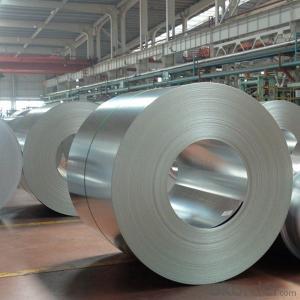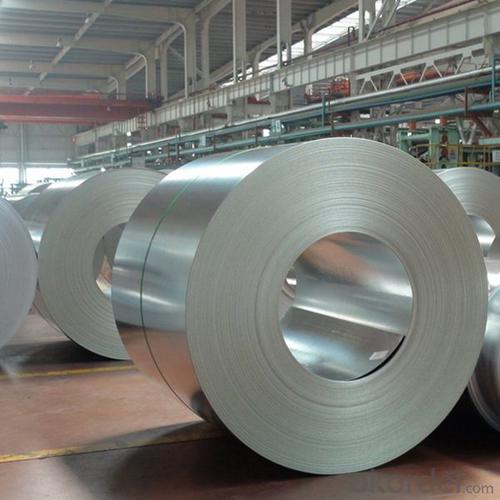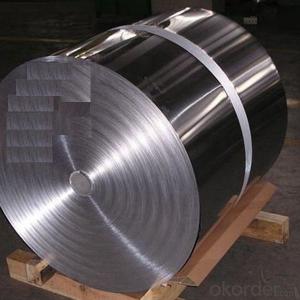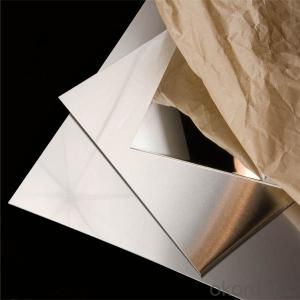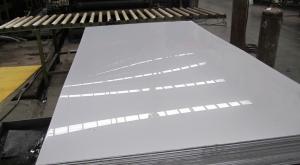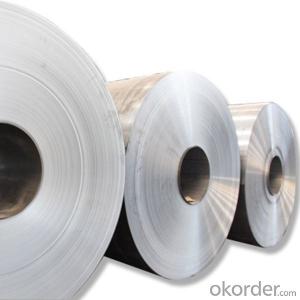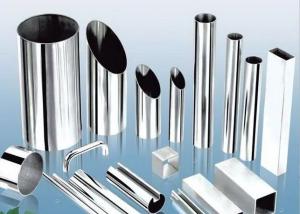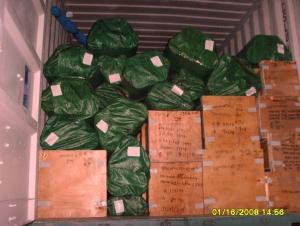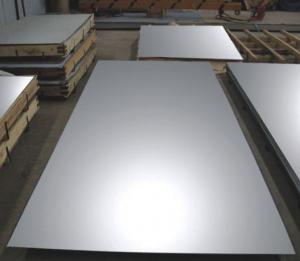Steel Stainless 304 For Good Quality,Made in China
- Loading Port:
- Tianjin
- Payment Terms:
- TT OR LC
- Min Order Qty:
- 22 m.t.
- Supply Capability:
- 25 m.t./month
OKorder Service Pledge
OKorder Financial Service
You Might Also Like
Specification
Products Description for Stainless Steel Coils/Sheets:
Product | stainless steel coils/plates/sheets | ||
Discharge Port | Any Port, China | ||
Size | Coils | Cold Rolled: | Thickness0.3-8mm,Width:280-2100mm |
Hot Rolled : | Thickness3-14mm,Width:650-2100mm | ||
Plates | Thickness2-80mm,Width:1500-3000mm | ||
Coil Weight | About 20 Tons | ||
Grade | 201,202,304/304L/304H,316/316L/316H,321/H,310S,409/L,430 etc. | ||
Technique | Hot Rolled/Cold Rolled | ||
Finish | 2B, BA, 2D, No1, No2, No4,NO.8,SB etc | ||
Edge | Mill Edge / Slitting Edge | ||
Package | In bundles, or as customer's requirement | ||
Place of Origin | Made in China | ||
MOQ | 20 Tons | ||
Specifications for Stainless Steel Coils/Sheets:
Grade | C ≤ | Si ≤ | Mn ≤ | P ≤ | S ≤ | Ni ≤ | Cr ≤ |
201 | 0.12 | 0.75 | 7.00 | 0.045 | 0.045 | 1.00-1.28 | 13.70-15.70 |
202 | 0.15 | 1.00 | 2.25 | 0.045 | 0.045 | 4.07-4.17 | 14.00-16.00 |
304 | 0.08 | 0.75 | 2.00 | 0.045 | 0.03 | 8.00-11.00 | 18.00-20.00 |
304L | 0.035 | 0.75 | 2.00 | 0.045 | 0.03 | 8.00-13.00 | 18.00-20.00 |
309 | 0.15 | 0.75 | 2.00 | 0.045 | 0.03 | 12.00-15.00 | 22.00-24.00 |
310S | 0.08 | 1.50 | 2.00 | 0.045 | 0.03 | 19.00-22.00 | 24.00-26.00 |
316 | 0.08 | 1.00 | 2.00 | 0.045 | 0.03 | 10.00-14.00 | 16.00-18.00 |
316L | 0.035 | 0.75 | 2.00 | 0.045 | 0.03 | 10.00-15.00 | 16.00-18.00 |
321 | 0.04-0.10 | 0.75 | 2.00 | 0.045 | 0.03 | 9.00-13.00 | 17.00-20.00 |
405 | 0.08 | 0.75 | 1.00 | 0.045 | 0.03 | 0.06 | 11.5-13.5 |
409 | 0.089 | 1.00 | 1.00 | 0.045 | 0.05 | 0.06 | 10.50-11.75 |
410 | 0.15 | 0.75 | 1.00 | 0.045 | 0.03 | 0.06 | 11.5-13.5 |
420 | 0.16-0.25 | 1.00 | 1.00 | 0.040 | 0.03 | 0.06 | 12.00-14.00 |
430 | 0.12 | 0.75 | 1.00 | 0.045 | 0.03 | 0.06 | 16.00-18.00 |
Features of Stainless Steel Coils
(1)Good ductility
(2)Good corrosion resistance
(3)Excellent abrasion resistance and fatigue strength
(4)Good weldability
(5)Oxidation resistant performance
(6)Excellent in high temperature
Our Service
1.High quanlity and reasonable price.
2.Customized on-demand.
3.Reasonable shipping and fast delivery.
4.Free sample.
Details for products:
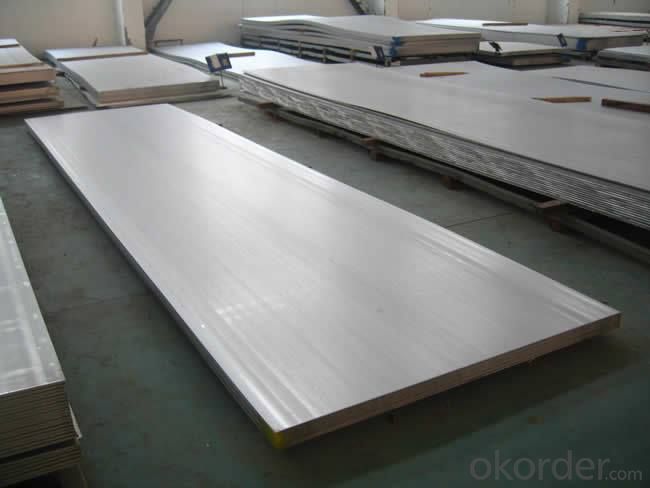

FAQ for Stainless Steel Coils/Sheets:
Q: How long is the delivery time?
A: Normally 30-40 days, but mostly according to the specific requirements or the quantity
Q: Could you send me sample?
A: We can supply you with the sample for free, but the delivery charges will be covered by customers.
- Q: What is the flatness tolerance for stainless steel sheets?
- The flatness tolerance for stainless steel sheets can vary depending on the specific grade and thickness of the sheet. In general, the flatness tolerance is typically specified as a maximum deviation from a perfectly flat surface. The accepted industry standard for stainless steel sheets is typically around 0.003 inches per linear foot. However, it is important to note that different industries or applications may have their own specific flatness tolerance requirements. Therefore, it is always advisable to consult the relevant standards or specifications for the specific stainless steel sheet being used in order to determine the appropriate flatness tolerance.
- Q: What is the weight of a stainless steel sheet?
- The weight of a stainless steel sheet can vary depending on its dimensions and thickness. Stainless steel has a density of around 8 grams per cubic centimeter, so to calculate the weight of a sheet, you would need to know the length, width, and thickness of the sheet. By multiplying these dimensions together and then multiplying by the density, you can determine the weight of the stainless steel sheet. For example, a 4-foot by 8-foot stainless steel sheet with a thickness of 1/8 inch would weigh approximately 56 pounds. It is important to note that these calculations are approximate and may vary slightly depending on the exact composition and grade of the stainless steel.
- Q: Can stainless steel sheets be used for wall cladding?
- Yes, stainless steel sheets can be used for wall cladding. Stainless steel is a durable and corrosion-resistant material that is often chosen for its aesthetic appeal and ease of maintenance. It is commonly used in commercial and residential spaces to enhance the appearance of walls while providing protection and durability.
- Q: Can stainless steel sheets be used for flooring?
- Yes, stainless steel sheets can be used for flooring. Stainless steel is a durable and versatile material that is resistant to corrosion, stains, and scratches, making it suitable for high-traffic areas. It is commonly used in commercial and industrial settings, such as hospitals, kitchens, and food processing plants, where cleanliness and hygiene are crucial. Stainless steel flooring offers a sleek and modern look, it is easy to clean and maintain, and it can withstand heavy loads and extreme temperatures. Additionally, stainless steel sheets can be customized to fit any space and can be installed with various finishes to enhance slip resistance.
- Q: 304 stainless steel plate price ups and downs affected by what factors?
- First of all, the stainless steel ingredients, that is, stainless steel raw materials. Stainless steel is a kind of high alloy steel can resist corrosion in air or chemical corrosive medium. His representative steel 13 steel 1Cr17 (430) and 18- Ocr18Ni9 chromium nickel, stainless steel is the main raw material of iron, chromium, nickel, Cr NI, the price of raw materials has decisive effect on the price of stainless steel to the rising prices of raw materials, to support the formation of stainless steel prices, anti pressure, or become power. So we need to pay attention to the stainless steel market, we must pay close attention to the global price of nickel, especially LME nickel price trend, but also on the global iron ore, molybdenum price trend and the latest developments, and other non-ferrous metal prices.
- Q: Can stainless steel sheets be cut to size?
- Yes, stainless steel sheets can be cut to size. Stainless steel sheets are versatile materials that can be easily customized to fit specific dimensions and requirements. They can be cut using various methods such as plasma cutting, laser cutting, or waterjet cutting. These processes allow for precise and accurate cuts, ensuring that the stainless steel sheet is cut to the desired size without compromising its integrity. Additionally, stainless steel is known for its durability and resistance to corrosion, making it an excellent choice for applications that require cutting and shaping.
- Q: Are stainless steel sheets resistant to erosion corrosion?
- Yes, stainless steel sheets are highly resistant to erosion corrosion. This is primarily due to the presence of chromium in the alloy, which forms a protective layer of chromium oxide on the surface of the steel. This layer acts as a barrier, preventing oxygen and moisture from reaching the underlying metal and thus protecting it from corrosion. Furthermore, stainless steel sheets are also resistant to erosion corrosion caused by various chemicals and acids. The alloy composition of stainless steel, which typically includes elements such as nickel and molybdenum, enhances its resistance to corrosion in harsh environments. This makes stainless steel sheets suitable for a wide range of applications, including in industries such as chemical processing, oil and gas, and marine. However, it is important to note that the resistance of stainless steel sheets to erosion corrosion can vary depending on the specific grade or alloy used. Different grades may have different levels of corrosion resistance, so it is essential to choose the appropriate grade based on the specific environmental conditions and requirements of the application. Regular maintenance and proper handling can also help prolong the lifespan and maintain the corrosion resistance of stainless steel sheets.
- Q: What is the difference between 304 and 316 stainless steel sheets?
- The main difference between 304 and 316 stainless steel sheets is their composition and corrosion resistance. 304 stainless steel contains 18% chromium and 8% nickel, while 316 stainless steel contains 16% chromium, 10% nickel, and 2% molybdenum. This additional molybdenum in 316 stainless steel improves its corrosion resistance, making it more suitable for use in marine environments or applications exposed to harsh chemicals. Therefore, 316 stainless steel sheets are generally considered more corrosion resistant than 304 stainless steel sheets.
- Q: Can stainless steel sheets be used for food storage containers?
- Yes, stainless steel sheets can be used for food storage containers. Stainless steel is a safe and hygienic material for storing food as it is non-reactive, resistant to corrosion, and does not leach any harmful substances into the food. It is commonly used in commercial kitchens and food processing industries due to its durability and ease of cleaning.
- Q: How do you prevent pitting corrosion on stainless steel sheets?
- To prevent pitting corrosion on stainless steel sheets, there are several measures that can be taken: 1. Proper alloy selection: Choosing the right grade of stainless steel with high resistance to corrosion is crucial. Grades such as 316 and 904L are known for their excellent resistance to pitting corrosion. 2. Passivation: Stainless steel sheets should be passivated after fabrication to remove any free iron or contaminants on the surface. Passivation involves treating the sheets with an acid solution, followed by a thorough rinse and drying. This helps to restore the protective chromium oxide layer on the surface, enhancing corrosion resistance. 3. Regular cleaning and maintenance: Stainless steel sheets should be cleaned regularly to remove any dirt, debris, or contaminants that can lead to pitting corrosion. Mild soap, water, and a soft cloth or sponge can be used for routine cleaning. Harsh or abrasive cleaners should be avoided. 4. Avoid exposure to aggressive environments: Stainless steel sheets should be protected from exposure to chemicals, chlorides, acids, and other corrosive substances. If such exposure is unavoidable, proper measures like the use of protective coatings or barriers should be implemented. 5. Avoid stagnant conditions: Pitting corrosion is often accelerated in stagnant or low-flow conditions where oxygen levels are depleted. Ensuring proper ventilation and circulation of air or fluids can help prevent pitting corrosion on stainless steel sheets. 6. Regular inspection and maintenance: Periodic visual inspection and monitoring of stainless steel sheets can help identify any early signs of pitting corrosion. If any pitting is noticed, immediate action should be taken to address the issue, such as applying a suitable corrosion inhibitor or protective coating. By following these preventive measures, it is possible to minimize the risk of pitting corrosion on stainless steel sheets, ensuring their long-term durability and performance.
Send your message to us
Steel Stainless 304 For Good Quality,Made in China
- Loading Port:
- Tianjin
- Payment Terms:
- TT OR LC
- Min Order Qty:
- 22 m.t.
- Supply Capability:
- 25 m.t./month
OKorder Service Pledge
OKorder Financial Service
Similar products
Hot products
Hot Searches
Related keywords
